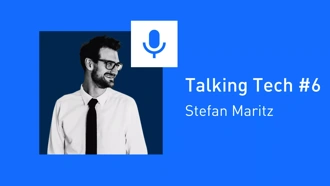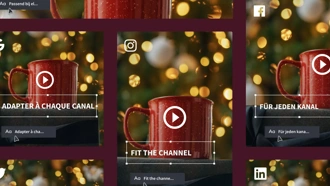The mile relay is one of the most exciting foot races to watch. Speed is critical, but races are won and lost during the handoff when each racer must pass the baton to the next runner. Drop the baton and the race is over.
For fast-moving creative teams working against tight deadlines, handoffs are also critical. To move an idea forward quickly, each stage of the creative process has to connect smoothly with the next. The finish line is in jeopardy if information or assets get fumbled.
Too much friction between steps in the creative process increases frustration and reduces creativity. To win in today’s intensely competitive economy, every advantage counts, just as every second counts in a race. Most marketing professionals are using software to gain an edge. Many of these tools are great, but you can make improvements to your workflow without them.
Look at your processes holistically and honestly. Assess what is and isn’t working. Pick a few things to work on and commit to changing them. Just a few of the ideas that follow can create a positive shift in how you work.
Always start strong
Creative briefs are the best place to start reforming. They define objectives, determine scope, set strategy and clarify requirements. Successful briefs inspire creative thinking so teams can deliver their best work. Reviews and approvals also tend to move faster when a brief is used.
According to the In-House Creative Industry Report, new projects only start with creative briefs about a quarter of the time. There are certainly times when you might not feel you need one, but even small projects will benefit from them. Try committing to writing a brief for as many projects as you can.
Some content may need to shift from one brief to the next, but many sections are consistently required. Templates help standardize successful briefing practices. You can build them in project management applications like Asset Workflow.
Briefs should fit into a page or two. Brevity makes a briefing document easy to read and it forces disciplined thinking. It helps to use informative, but conversational language. You want information to be absorbed so it will inspire stakeholders to get involved in discussion and debate about how to solve the challenges of the project early on.
Stay on track
Once everything’s in motion, transparent communication will keep projects on pace. Make sure everyone knows what the goals are, what the relevant deadlines will be and who needs to give feedback at each stage. If everyone’s sitting in one area of the same office, this can be handled with conversations or emails. When teams are working across time zones, it gets trickier.
Michael Dunn, Global Head of Brand and Creative at Norton Rose Fulbright, manages a global team of creatives serving law offices in dozens of countries. His biggest challenge was keeping things on schedule because his copywriters and designers are spread around the world.
According to Dunn, work was being done in a siloed manner. Each region took care of requests and produced work for the people in the offices they supported. Lawyers work long hours, so if a request came in after-hours, the creative team wouldn’t see it until the next day.
They needed a way to traffic work to these service centers and back again for reviews and approvals. Dunn says, “None of these teams were working together efficiently. We needed a way to traffic work to these service centers and back again for reviews and approvals, at any time of the day.”
One of the first things Dunn did was reorganize requests. They are now addressed chronologically so managers can easily prioritize projects and allocate resources. A transparent development pipeline aids in approvals and managing feedback. He also changed how projects are assigned. Creatives are no longer restrained by the bandwidth or working hours of a particular region.
Creative briefs allowed Norton Rose to route assignments to the appropriate resource. This reorganization of their workflow is a perfect example of how technology can enrich workflow. Norton Rose used our creative project management tool, Asset Workflow, to build and sustain the processes needed to provide around-the-clock service to the firm’s employees, worldwide. Creative briefs are developed, proofing and changes are made and sign off is given from the same platform.
Tweak your process
You have to know what is and isn’t working. Sit down with your team and draw out a basic project roadmap using real examples. Detail all of the common steps taken between the initial request and delivery of creative. Don’t leave anything out.
Once you have a map, note where projects tend to slow down or get stuck. Your team will probably have a good idea of the biggest pain points right away. Focus on one stage at a time. Work together to brainstorm changes that will work for everyone. The goal should be improvement, not disruption for its own sake.
If breakdowns are caused by people, have conversations with them about what they need to improve. Be specific about expectations. Check out 99u for guidance. They have a lot of good content and ideas about how to improve personal productivity.
Set specific goals and make sure they are measurable. For example, can the number of revisions be reduced? If so, by how much? What would it take to shorten the review cycle? Ideally, your goals will improve your process. Sometimes, just working on goals can provide a mental boost that drives progress.
Focus on inspiration
The constant demand for new content can drain creative brains. Add workflow inefficiencies on top and your entire team can end up hitting deadlines, but delivering dull work. So be sure to include steps in your roadmap that make space for dynamic thinking.
According to Forrester, 82% of executives agree companies benefit from creativity. It leads to increased revenue and greater market share. Creative companies, like Apple, also enjoy greater market share and competitive leadership. Forrester says, “Regardless of type of business or industry, survey results found that executives and business leaders should nurture, fund, and promote programs to increase creative capability.”
Scheduling an ideation hour where you or your team spends one hour thinking about creative solutions is easy to do (if you aren’t stressed from deadlines) and doesn’t require any technology. However, if you combine the practice with lightbox based mood boards, you can end up with a bank of usable ideas and images. Share them at the early stage of a project to get the creative juices flowing.
Final baton pass
Ultimately, assets need to be accessible. Operations quickly become inefficient if you don’t have a central hub for housing, accessing and distributing creative assets. This is an area where technology can lend a hand.
Digital asset management (DAM) allows you to organize your assets and search for them using keywords. The best DAM software offers core capabilities surrounding cloud storage, asset retrievability, asset shareability and features for brand management.
Using a DAM enables asset workflow automation, metadata based searches, file backups, usage tracking, e-commerce and more. Integrations with apps like Hootsuite allow marketers to take completed assets and publish them directly to social media platforms.
Once you start intentionally improving the steps in the creative process, you’ll notice an uptick in efficiency. All those seconds and minutes really add up. Refocus that unspent energy into more creativity and productivity and you’ll be coming in first in no time.
If you want to know all about DAM and how it can help your brand book a demo today.









